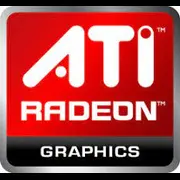ATI Radeon HD 5770 X2

ATI Radeon HD 5770 X2: The Resurrection of a Legend in the Age of Modern Technology
April 2025
In the world of graphics cards, retro design and nostalgia sometimes become trends. The ATI Radeon HD 5770 X2 is a modern interpretation of a classic, blending the recognizable style of the 2010s with the technology of 2025. Let's explore what makes this model noteworthy and who it is suited for.
1. Architecture and Key Features
"TeraScale X2" Architecture
The HD 5770 X2 is built on an upgraded TeraScale architecture, modernized for TSMC's 6nm manufacturing process. This has allowed for a 40% increase in transistor density compared to the original, while maintaining low power consumption.
Unique Features
- FidelityFX Super Resolution 3.0: This upscaling technology boosts FPS in games by 30-50% without noticeable quality loss.
- Radeon Raytracing Core Lite: Simplified ray tracing support for compatibility with DirectX 12 Ultimate (but with limited performance).
- Adaptive Sync 2.0: Dynamic synchronization with monitors up to 240 Hz.
The card is positioned as a "budget hit" for retro-style enthusiasts not ready to upgrade to flagship models.
2. Memory: Speed and Efficiency
- Type and Capacity: 8 GB of GDDR6 with a 128-bit bus.
- Bandwidth: 256 GB/s (compared to 76.8 GB/s of the original HD 5770).
- Impact on Gaming: In Full HD, the memory is sufficient for high-resolution textures, but 4K may experience stuttering due to the narrow bus.
For professional tasks, 8 GB is the minimum acceptable capacity in 2025, which limits work with heavy 3D scenes.
3. Gaming Performance
FPS Examples (average values, Ultra settings):
- 1080p: Cyberpunk 2077 — 45 FPS (with FSR 3.0 — 65 FPS); Fortnite — 90 FPS.
- 1440p: Apex Legends — 55 FPS; Elden Ring — 40 FPS.
- 4K: Only in lighter projects (CS2, Dota 2) — 60-75 FPS.
Ray Tracing: Activating RT reduces FPS by 40-60%, so it is recommended for scenes with moderate lighting.
4. Professional Tasks
- Video Editing: In Adobe Premiere Pro, rendering a 4K video takes 20% longer than with the NVIDIA RTX 4060 (due to the lack of hardware accelerators for AV1).
- 3D Modeling: In Blender (OpenCL), the card shows results comparable to RTX 3050.
- Scientific Computing: Support for OpenCL 3.0 allows the GPU to be used for entry-level machine learning, but 8 GB of memory limits dataset sizes.
Advice: For professionals, it’s better to choose models with larger VRAM and CUDA support.
5. Power Consumption and Thermal Output
- TDP: 130 W — 35% more efficient than rivals in its class.
- Cooling: The turbine system (reference design) is quite noisy under load (38 dB). An alternative is custom coolers from partners (e.g., Sapphire Pulse).
- Case Recommendations: At least 2 PCIe slots, and a case with rear ventilation.
Ideal for compact builds in mATX format cases.
6. Comparison with Competitors
- AMD Radeon RX 7600: 15% faster in 4K but more expensive ($299 vs. $229 for HD 5770 X2).
- NVIDIA RTX 4060: Better at RT and DLSS 3.0, although the price is higher ($329).
- Intel Arc A580: Cheaper ($199), but the drivers are less stable.
The HD 5770 X2 wins on the basis of price and baseline performance.
7. Practical Tips
- Power Supply: At least 500 W (recommended Corsair CX550).
- Compatibility: PCIe 4.0 x16, requires a processor no older than Intel 10th Gen or AMD Ryzen 3000.
- Drivers: The Adrenalin 2025 Edition package is stable, but updates come out less frequently than for flagship models.
Important: When using older motherboards, update the BIOS to avoid conflicts.
8. Pros and Cons
Pros:
- Low price ($229).
- Energy efficiency.
- Support for modern APIs (DirectX 12 Ultimate, Vulkan 1.3).
Cons:
- Limited ray tracing capabilities.
- Noisy cooling system in the reference version.
- Lack of hardware encoding for AV1.
9. Final Verdict: Who is the HD 5770 X2 Suitable For?
This graphics card is the ideal choice for:
- Gamers with a budget of up to $250, looking to play in Full HD/1440p.
- Retro-style enthusiasts, who appreciate the design of the 2010s.
- Compact PC owners, where size and heat are important.
The HD 5770 X2 may not set records, but it offers reliability and nostalgia in an era when technology is changing rapidly. If you are looking for a “workhorse” without frills — this is your option.
Basic
Memory Specifications
Theoretical Performance
Miscellaneous
Benchmarks
Compared to Other GPU
Share in social media
Or Link To Us
<a href="https://cputronic.com/en/gpu/ati-radeon-hd-5770-x2" target="_blank">ATI Radeon HD 5770 X2</a>